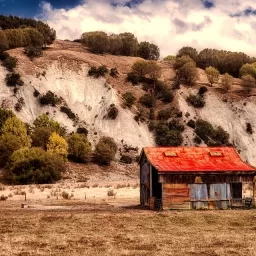Wooden Shed – Perfect Additional Room
Sometimes wooden sheds lack adequate space to hold in all the things that you want to store in them. It is at this point that building an additional room begins to make sense. Not only does it give you extra space but it also prevents you from having to incur costs when buying or building a bigger shed. Here are some quick steps to creating an additional room.
Step 1: Planning
You must figure out the size that you need. It is always best to build an additional room big enough to anticipate future needs so that you don’t end up needing more space shortly. Other than space requirements, there are other things that you need to consider.
Local regulations
Find out what the regional zoning laws are and get the necessary permits for your construction. It is essential that you understand the building code requirements in your region to avoid legal trouble.
Examine the building site
Before you start building, you must figure out whether any environmental hazards can occur during construction. Get a professional to inspect the property for any drain pipes or electrical lines that you could run into in the process.
Plan your project
Once the site is clear and you have the legal papers at hand, you can start working on a drawing. The size of your sketch will determine the materials used as well as the time spent so be sure to look into this. Also, indicate where the additional room will lie adjacent to your current wooden shed. The design of your roof should be such that it can withstand weather elements such as snow and rain.
The foundation
Though an additional room is often small in size, it must have a foundation for stability purposes. Its strength affects the strength of your shed so go for materials such as concrete blocks.
Materials
There are tons of materials that you can use in construction. One good example is lumber which is not only strong but is also available at a reasonable price. Other choices include composite sidings and cementitious boards. Based on your drawing, calculate the number of materials you require and buy the goods.
Step 2: Preliminaries
This stage is quite simple, and you can handle it without the need for professional help.
Map out the construction site
Start by clearing any vegetation that will be a hindrance during construction and level the soil. If you wish to have an earth floor in your additional room, you can leave the site as it is. If you want to construct a level, then compacting the soil is necessary. Be sure to use a flooring material that can withstand weather conditions.
Digging holes
Next, with the use of your building codes and drawing, drill holes for the support posts. Keep the load of the rafters and weights on the roofs in mind as you dig the holes. Also, ensure that the outer wall of your additional room lies parallel to your wooden shed so that placing rafters will not be cumbersome.
Placing the posts
Using a sledgehammer, drive the shed posts into the ground. You can use wooden stakes alongside the boards to help you ensure that the posts are straight. Using a plumb at this stage is also necessary. Once the shed posts are in place, pour some concrete in the holes for added support and leave it to set for at least twenty-four hours.
For a temporary room, you can opt to use dirt to fill the post holes. Next, use a line level to help you mark a bench elevation on the posts. This marking will help you figure out how much load the rafters can bear. Place notches on top of the posts such that the supporting joists will lie on the notches before you connect the beams.
Place the supporting joist on the notches in readiness for the rafters. If you wish to have any purlins in your shed, now is the time to attach them to the posts. Ensure that you nail everything before moving on to subsequent steps.
Step 3: The Roof
Your roof must be sturdy to withstand weather elements, and as such, you must take great caution in its construction.
Fasten a supporting joist
Just as you did on the posts, nail on a supporting beam on the part of the shed where the upper end of the rafters will be. If you are attaching the wooden joist to a metallic building, using a self-drilling screw is prudent. Ensure that the beam is secure as it will bear the weight of the roof and framing. Next, place the rafter spacing on the upper and lower joists.
Laying the roof
Start by determining the angle of the roof by stringing a line from the upper rafter to the lower one and use this pitch to cut the timbers. Place the beams in position and nail them onto the joists before laying out the spacing for your lathing. Sometimes, it is necessary that you cut part of the existing roof so that the new roof can fit underneath it. If you do so, remember to use metal flashing to prevent water leakages in the future. You can now place your roofing material on the lathing and fasten it in place.
Step 4: Completion
You now have the skeleton of your structure and can now work on installing partitions in the additional room, doors, flooring and exterior walls. Pay attention to the materials that you choose as they will affect the durability of your structure. Also, be sure to fasten each item in place.
Step 5: Finishes
Start by ensuring that the building is up to code and check for any unfastened fittings. Watch out for any exposed metallic corners and roll them to ensure that they cannot cut someone walking past. You can then clear up the site, put your tools away and clean the room in readiness to move in.
Getting an additional room is as simple as five simple steps which will leave you with adequate room for entertaining, storage as well as any other desired purposes. What’s more, it’s very cost-friendly.
shed
#Wooden #Shed #Perfect #Additional #Room
Will be pleased to have you visit my pages on social networking .
Facebook page here.
Twitter account is here.
Linkedin account here
Post byBedewy for info askme VISIT GAHZLY



